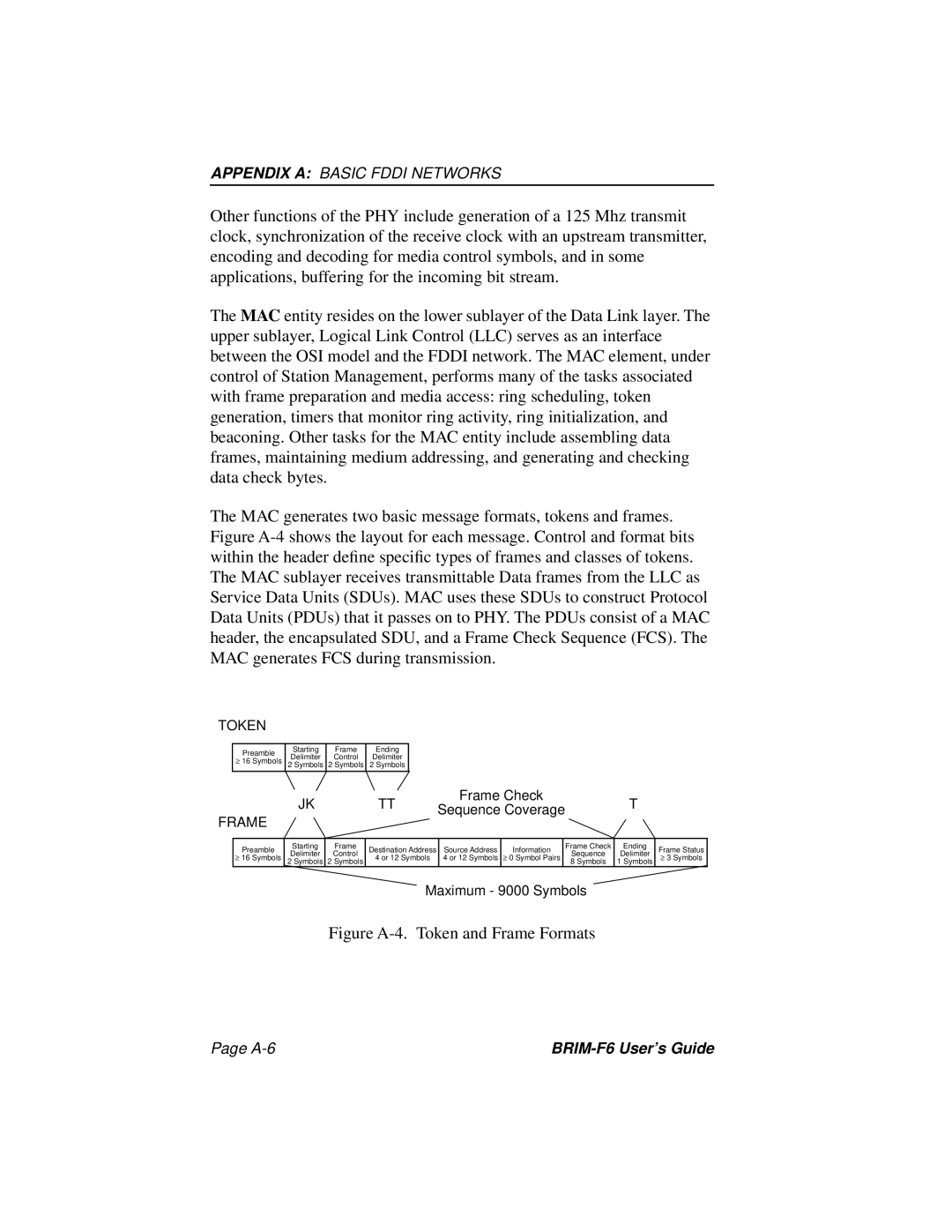
APPENDIX A: BASIC FDDI NETWORKS
Other functions of the PHY include generation of a 125 Mhz transmit clock, synchronization of the receive clock with an upstream transmitter, encoding and decoding for media control symbols, and in some applications, buffering for the incoming bit stream.
The MAC entity resides on the lower sublayer of the Data Link layer. The upper sublayer, Logical Link Control (LLC) serves as an interface between the OSI model and the FDDI network. The MAC element, under control of Station Management, performs many of the tasks associated with frame preparation and media access: ring scheduling, token generation, timers that monitor ring activity, ring initialization, and beaconing. Other tasks for the MAC entity include assembling data frames, maintaining medium addressing, and generating and checking data check bytes.
The MAC generates two basic message formats, tokens and frames. Figure
TOKEN
Preamble
≥16 Symbols
Starting Frame Ending
Delimiter Control Delimiter
2 Symbols 2 Symbols 2 Symbols
JK | TT | Frame Check | T | |
Sequence Coverage | ||||
|
|
|
FRAME
Preamble
≥16 Symbols
Starting Frame
Delimiter Control
2 Symbols 2 Symbols
Destination Address | Source Address | Information |
4 or 12 Symbols | 4 or 12 Symbols | ≥ 0 Symbol Pairs |
Frame Check
Sequence
8 Symbols
Ending
Delimiter
1 Symbols
Frame Status
≥3 Symbols
Maximum - 9000 Symbols
Figure A-4. Token and Frame Formats
Page |
|
